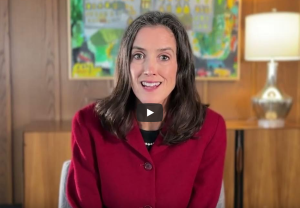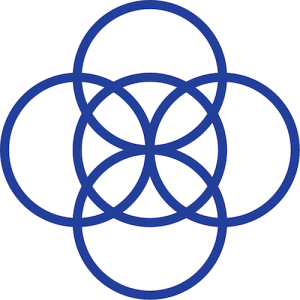
A stimulating initiative to improve brain function after injury or stroke
The Waisman Center is launching a groundbreaking new initiative using non-invasive brain stimulation (NIBS) that has the potential to transform the lives of infants and young children who have experienced early-life brain injuries. Early brain injuries can significantly impact a child’s development, affecting movement, speech, and other areas of function. Traditional interventions have had limited success in fully addressing these challenges across conditions. However, recent advancements in non-invasive brain stimulation offer new hope. This tool uses electromagnetic energy applied painlessly to the scalp to measure and influence brain activity, providing a novel and safe intervention method.

We need your help. The Waisman Center needs to raise $500,000 to establish non-invasive brain stimulation as a tool for researchers and clinicians. These funds will secure the needed equipment to move research and interventions forward. This tool has the capacity to impact a wide range of health and developmental areas and offers a non-invasive, painless, and safe method to better understand and influence brain function and behavior. Your charitable gift advances research, improves lives, and builds a better future for children and families impacted by a brain injury.
Go to the Neuromodulation Services page to learn more.
Fequently Asked Questions
Q: What is the NMS and how will it support translational healthcare research in Wisconsin?
A: The Neuromodulation Service (NMS) is a resource, housed in the Waisman Center, that provides access to non-invasive brain stimulation (NIBS) technologies. The NMS supports translational healthcare research by providing a platform for clinical trials and other research studies aimed at understanding and improving brain function. It facilitates the development of new therapeutic protocols and enhances the integration of NIBS techniques into clinical practice, ultimately improving patient outcomes. By providing a centralized resource for NIBS technologies and expertise, the NMS lowers cost barriers for researchers at the University of Wisconsin-Madison to incorporate NIBS in their studies.
Q: What is NIBS?
A: Non-invasive brain stimulation (NIBS) is an umbrella term for technologies that allow us to alter brain activity without using implanted devices. NIBS provides a powerful set of tools to study the brain and can even be used to promote healthier brain activity. When combined with other types of therapy, NIBS can further enhance their effectiveness.
Q: What types of NIBS are available through the NMS?
A: The NMS currently provides access to transcranial magnetic stimulation (TMS) and transcranial direct current stimulation (tDCS) services. See the sections below for more details on TMS and tDCS. NIBS is an actively developing field with many new technologies being researched and developed. As the NMS develops, we will continue to expand our services to offer additional forms of NIBS and even greater breadth of research tools.
Q: What is TMS?
A: Transcranial magnetic stimulation (TMS) is a technique for non-invasively activating neurons (brain cells) through the use of electromagnetic fields. A hand-held coil is placed on the participant’s head to deliver a brief pulse of energy. This energy activates the neurons under the TMS coil by making use of the natural signaling properties of the brain. TMS can be used as a tool for assessing different regions of the brain to understand their functions or for altering brain activity to improve health outcomes.
Q: What is tDCS?
A: Transcranial direct current stimulation (tDCS) is a non-invasive brain stimulation technique that delivers a low electric current to the scalp through electrodes. This current changes the activity of neurons, either enhancing or inhibiting their activity in targeted areas depending on how the electrical current is delivered. tDCS is used for various applications, including answering questions about the function of targeted brain areas and the treatment of neurological and psychiatric conditions.
Q: What are the benefits of NIBS?
A: NIBS offers several potential benefits. Researchers are currently studying if NIBS can be used to improve cognitive function, enhanced motor skills, and provide therapeutic effects for conditions like depression, obsessive-compulsive disorder, and chronic pain. NIBS may also support healing after stroke and other brain injuries by promoting neuroplasticity and functional recovery. In addition to the use of NIBS as a means of clinical intervention, NIBS technologies offer powerful ways for researchers to study a variety of brain processes, advancing our understanding of how the brain works on a fundamental level.
Q: Is NIBS safe? Are there any risks or side-effects?
A: NIBS is generally safe and well-tolerated. Possible side effects depend on the type of NIBS the individual is receiving.
-
- tDCS: Side effects of tDCS are minor and may include skin redness, itching, or tingling at the electrode site. Some individuals might experience headaches or sleepiness. Side effects are typically mild and transient.
- TMS: Minor side effects of TMS may be headache, muscle twitching during stimulation, and discomfort at the stimulation site. Individuals with a history of fainting during medical procedures may faint during TMS. In very rare cases, seizures have occurred during TMS. All TMS related seizures to date have resolved once stimulation stopped and have not been associated with any increased risk of subsequent seizures. Many side effects can be mitigated or prevented with the use of safety screening questionnaires, before the stimulation, and symptom monitoring during stimulation.
Q: What does NIBS feel like?
A: NIBS sensations depend on the type of stimulation the individual is receiving.
-
- tDCS: Participants may feel a mild tingling, itching, or a sensation similar to pins and needles on the scalp where the electrodes are placed. These sensations usually last only a few minutes and are not painful.
- TMS: Participants may feel a light tapping sensation on the scalp where TMS is being delivered and may hear a clicking noise. TMS near the face can produce facial muscle twitches and discomfort in some individuals. In many cases, the intensity of stimulation can be adjusted to the participant’s tolerance.
Q: Who can receive NIBS? Are there age restrictions?
A: NIBS has been found to be safe in studies with adults and children. Individuals with implanted devices such as cardiac pacemakers, biostimulators, or intracranial electrodes should not receive some forms of NIBS. People with non-removable metal in the head or neck should not receive TMS. Forms of NIBS are used with US Food and Drug Administration (FDA) approval for diagnoses such as depression, and research, including research in the NMS expands our understanding of applications in other diagnosis. This research is performed under FDA, Institutional Review Board and Monitoring audits and regulation.
Principal Investigators

Bernadette T. Gillick, PhD, MSPT, PT
Bernadette Gillick, PhD, is a neuroscientist and pediatric physical therapist of over 30 years. At the University of Wisconsin-Madison she holds roles as professor in the Department of Pediatrics within the School of Medicine and Public Health, director of research design in the Institute for Clinical and Translational Research (ICTR), and director of the Waisman Center Pediatric Neuromodulation Laboratory and the Waisman Clinical and Translational Core Neuromodulation Service. Her focus is on brain development and recovery after early injury to the brain and resultant cerebral palsy diagnosis. Her pioneering work in the field of pediatric neuromodulation has served as the foundation for safety, feasibility and efficacy research around the world.

Haley Dresang, PhD
Haley C. Dresang, PhD, is a neuroscientist and assistant professor in the Department of Communication Sciences and Disorders at the University of Wisconsin–Madison. She is affiliated with the Neuroscience Training Program and the Departments of Neuroradiology and Neurology in the UW School of Medicine and Public Health. She directs the NeuroLAND Lab at the Waisman Center, where her team investigates the neuroscience of language and neurological disorders that affect communication. Her research focuses on understanding how the brain supports language and how it adapts following stroke, brain injury, or neurodegenerative disease. By integrating non-invasive brain stimulation with psycholinguistic and neuropsychological assessments, brain imaging, and genetics, her work uncovers biological markers of neuroplasticity that predict individual differences in language outcomes. This research will optimize and individualize neurorehabilitation that restores meaningful language and empowers people to reconnect, contribute, and thrive in their daily lives.
